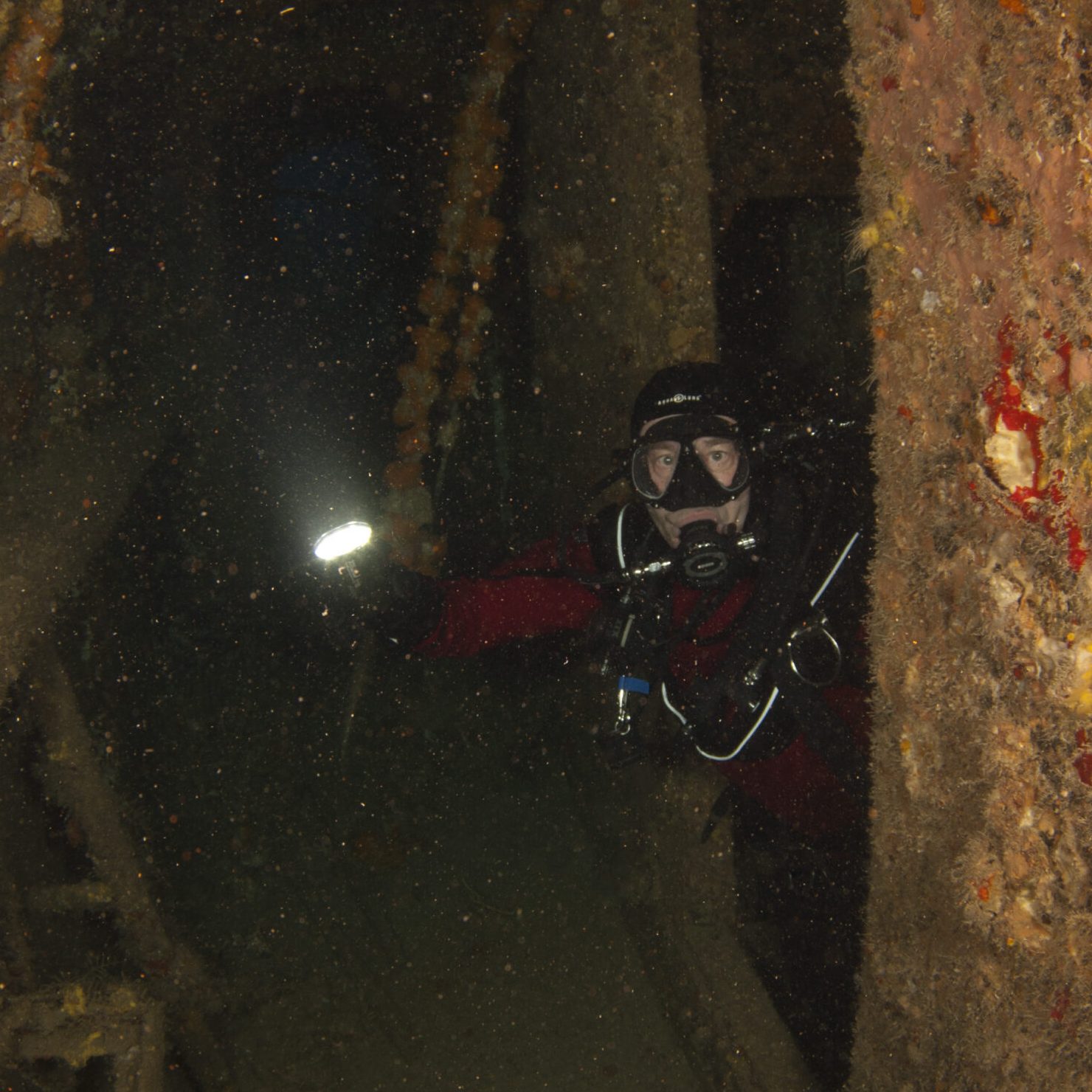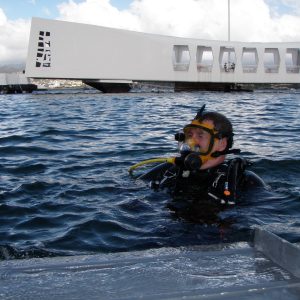Your cart is currently empty!
Advanced Wreck for Deco Divers
Course Price: $1,700.00
Now Due: $850.00
The Advance Wreck for Deco Certified Divers training course is a comprehensive 4 day program for divers who are already Decompression or Trimix certified. It is an advanced course for already experienced divers who are interested in the skills relating to managing the risks of wreck penetration. In this course I train students in utilizing time proven wreck diving techniques and theory.
Cave diving, Mine diving, Ice Diving, and Wreck diving are all extreme overhead environment diving disciplines. They all have some similarities, but they also have some significant differences. Cave diving techniques work great on caves, but not so well for shipwrecks, with the reverse being true as well. Shipwrecks are complex manmade constructions, that for cause have ended up on the seabed. Our goal is to understand the wrecks we dive, in ways that give us advantages for exploration and navigation.
Description
This is an intensive 4 day, 6 dive, technical Scuba diving class that trains divers in the TDI Advanced Wreck specialty certification.
This is how I dive, and what I teach. We will use the six navigational tools, Strobes, Identification, Magnetic Compass, Penetration Lines, Lines of the Wreck, and Exact Depth to insure our ability to navigate into and out of wrecks. It is more than what you read in the book.
As a rule, shipwrecks are deeper dives, and this is especially true of Big Steel wrecks. The ability to plan and execute dives requiring mandatory decompression makes longer, more complex wreck penetration dives possible. Shipwreck penetration and decompression diving are almost inseparable. The class I teach is for decompression divers.
I train students to look at shipwrecks the way I look at shipwrecks. It is all about visualization, perspective and mindset. We cover fundamental skills like equipment, surveying, navigation, decision making, philosophy, and wreck penetration techniques. At the same time, divers learn how to plan and execute penetration dives with proper accommodation for contingencies and a full understanding of the limitations imposed on them by the wreck, decompression, oxygen exposure, and gas supply.
All dives for this course will necessitate mandatory decompression.
Equipment Requirements
Student divers are already certified for diving to the depths in this class, so I am not going to talk about basic decompression diving equipment that you need, and you are currently using. The required equipment listed below are specifically for the wreck diving portion of our dives. If you have any questions or need greater clarity, you are welcome to contact me and I will do my best to help you.
- Gloves – Wreck diving is a contact sport. Simple hand protection is what you need and if you already have gloves, that will probably work best? I prefer simple Gardening gloves or cut-resistant gloves, like Dyneema, over neoprene.
- Fins and Booties – Long blade Freediving fins are not suitable. Open heel fins work best. I do not wear booties, I wear mid height Marine Assault boots, either Altama or Woobies and XL size fins. They are made for. salt water.
- Hood – A hood protects your head inside the wreck. It will keep rust and marine life away from your scalp, and protect you from injury. Personally, I prefer a hooded vest as it keeps rust and other debris from going down my back, as well as protecting my head.
- Backup Mask – You need a Backup Mask, and a way to carry it. I use a Vertical Zip Bellows Pocket glued to my thigh on my wetsuit, but you may want to use another style, or not feel comfortable gluing anything? Some divers really like the Tech Shorts, like the Apeks Shorts?
- Regulators
- You will need a Primary and a Primary Backup regulator on your Bottom Gas supply, one with a 6′ or longer long hose.
- You will need an O2 clean deco gas regulator.
- You need a single SPG connected to the first stage regulator, for each gas supply. It is not necessary to have two SPG’s on your Bottom Gas , but you can. I have an SPG and an AI.
- Dive Computer – For this class, You must have a dive computer, with my preference being a Shearwater Dive Computer. You also will need a backup computer or depth gauge.
- Dive Planner – You need a means to plan your dives using your dive computer, Smart Phone, laptop, or tablet.
- Lights – One Primary, and one Backup are required. I would suggest 1000 lumens minimum.
- Strobe Light – A strobe is optional. I have several, and I will show you how to use it. I like the Tektite Strobe 6. It is positively buoyant, but a large Bolt Snap will keep it from floating away, and let it lie with the light up for the best visibility.
- SMB – You will need a good SMB, and you will use it. Bring what you have for an SMB, but no Safety Sausage. We will be hanging on our SMB’s for Deco. Personally, I love the Carter 25# Spearfishing Float with a CO2 inflator. As an instructor, I am responsible for the students, so I can operate the Spearfishing Float and hand off to a student very quickly, in a couple of seconds.
- Spool or Reel – This is to use with your SMB, 100’ minimum line. Bring everything you already own, or get a cheap aluminum spool off of Amazon. You will know more of what you want, after a couple of dives. I like the Dive Rite Slide Lock2 reel.
- Cutting Device – Bring Two knives, not something “like a knife”. Make it sharp There are reasons.
- Slate or Notebook and Pencil – We want to make notes on our dive plan, and notes on the wreck. We will take information into the water, and out of the water. I use a simple Dive Rite wrist Slate.
- Jon Line – I will supply you with a Jon Line, you supply the Bolt Snap. It will be yours to keep forever, or until you lose it. Feel free to bring your own Jon Line, if you like.
- Bolt Snap Clip – Bring two spare “Double Enders”, “Double Dogs”, Bolt Snaps, or whatever you want to call them. I used to say, bring a one, but you really need two.
- Weight – We have weight if needed.
You are free to bring anything else you would like, other than cameras, as they are distracting. If you have any equipment questions, which you will, please feel free to ask.
Course Schedule
4 Days of training, and 6 Ocean Dives
Day 1 – AM Two Wreck Dives 100′, PM Classroom for Debrief and academics.
Day 2 – AM Two Wreck Dives 100′, PM Classroom for Debrief and academics.
Day 3 – AM Single Wreck Dive 150′, PM Classroom for Debrief and academics.
Day 4 – AM Single Wreck Dive 150′, PM Classroom for Debrief and academics.


